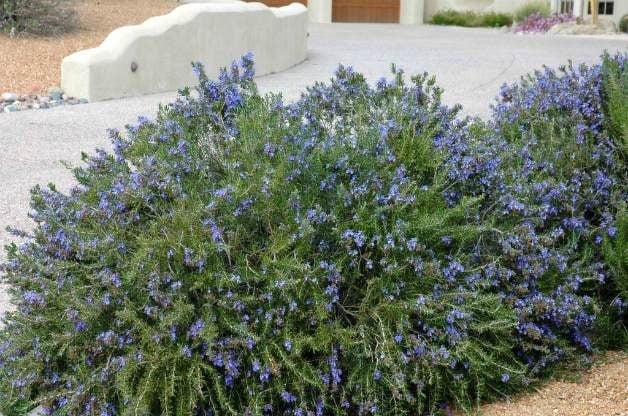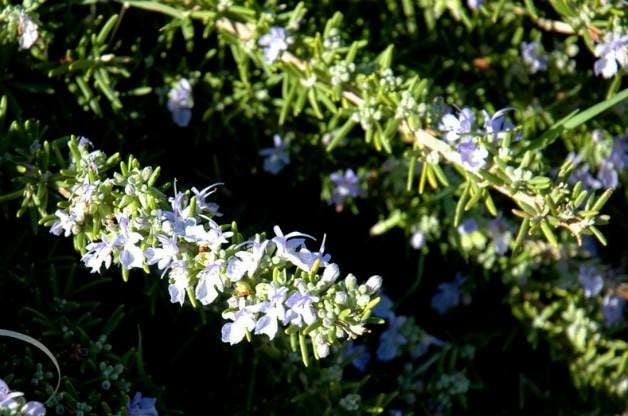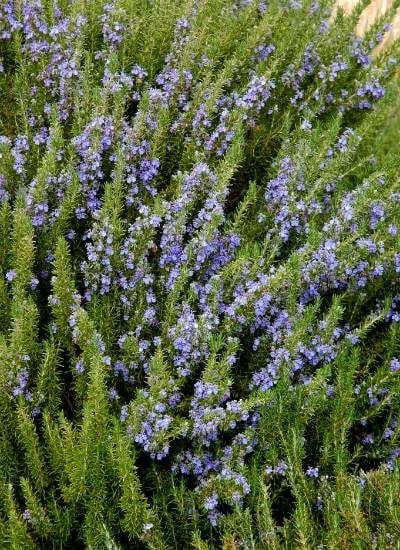How to Grow a Drought Tolerant Rosemary Shrub
Updated: Dec. 21, 2022
A rosemary shrub isn't just for cooking—rosemary is also a great ornamental plant that does well in the landscape, including drought tolerant gardens.

Benefits of Rosemary Shrubs
When people look for an attractive evergreen shrub, rosemary is not what probably comes to mind right away. But when you think about it, why not use a rosemary bush as an ornamental shrub in the garden? A rosemary shrub has a lot of the things people look for when selecting a new plant for their garden—evergreen foliage, an attractive growth habit and of course, pretty flowers!
Discover the top 15 drought-tolerant plants that can handle dry weather.

Maybe it’s time to take a second look at a rosemary shrub (besides the herbal qualities) and what benefits it brings to the garden. Learn about edible flowers: What flowers can you eat?
The scientific name of rosemary (Rosmarinus officinalis), is Latin for “dew of the sea.” It was said to adorn the goddess, Aphrodite, when she emerged from the sea. This aromatic shrub is native to the Mediterranean region and does especially well in drought tolerant gardens. The foliage consists of dark green, needle-like aromatic foliage, which is evergreen. In spring and fall, small blue flowers form, transforming these evergreen shrubs into something beautiful.
Discover 5 attractive drought tolerant shrubs for your garden.
How to Grow Rosemary
A rosemary shrub can grow from 1 to 6 feet tall and spread out to 4 to 6 feet depending on the variety. This makes it a versatile plant in the landscape. If you are looking for a plant for an informal hedge or if you want an attractive groundcover that spills over a wall or planter, rosemary is a great choice. Rosemary can also be planted in groups of 3 to 5 in an informal arrangement, spaced at least 6 feet apart.
Discover 15 ways to conserve water in the garden.

If your garden is located in zones 8 and above, you are fortunate that you can grow rosemary shrubs outside all year. However, if you live in a colder region, don’t despair—you can grow rosemary, too! Simply plant rosemary in a pot and bring it inside when winter temperatures dip down into the 20s. Learn how plant zones work and how to find yours.
Like most herbs, rosemary isn’t a fussy shrub and does best when left alone. What they do need is an area with well-drained soil and a sunny exposure. While they can be grown in light shade, the foliage will be sparse and it may not flower. Water deeply and allow to the soil to dry out before watering again. Rosemary doesn’t like ‘wet feet’, which makes them a great choice for the drought tolerant garden. They do equally well in slightly acidic or slightly alkaline soils. Rosemary shrubs don’t need regular pruning. Although they can be lightly sheared for a more formal appearance.
If you live in an area with frequent wildfires, take a look at these fire resistant plants.

Types of Rosemary to Grow
Rosemary plants are propagated by cuttings and are generally found in two growing forms: as a shrub or a groundcover. There are several varieties available that offer variations in growth habit, foliage and flower color. Low-growing varieties include ‘Irene’ or ‘Prostratus’. If you like multi-colored foliage, you may want to try ‘Aureus’ with its speckled foliage. ‘Golden Rain’ has streaks of yellow. While the predominant flower color is blue for most varieties of rosemary, there are white ‘Albus’ and pink ‘Roseus’ flowered varieties available.
Rosemary has much more to offer than simply the flavor its leaves add to our favorite foods. Why not utilize it to its fullest extent as both an herb and an ornamental plant!
Next, check out drought resistant trees and plants to grow for birds.